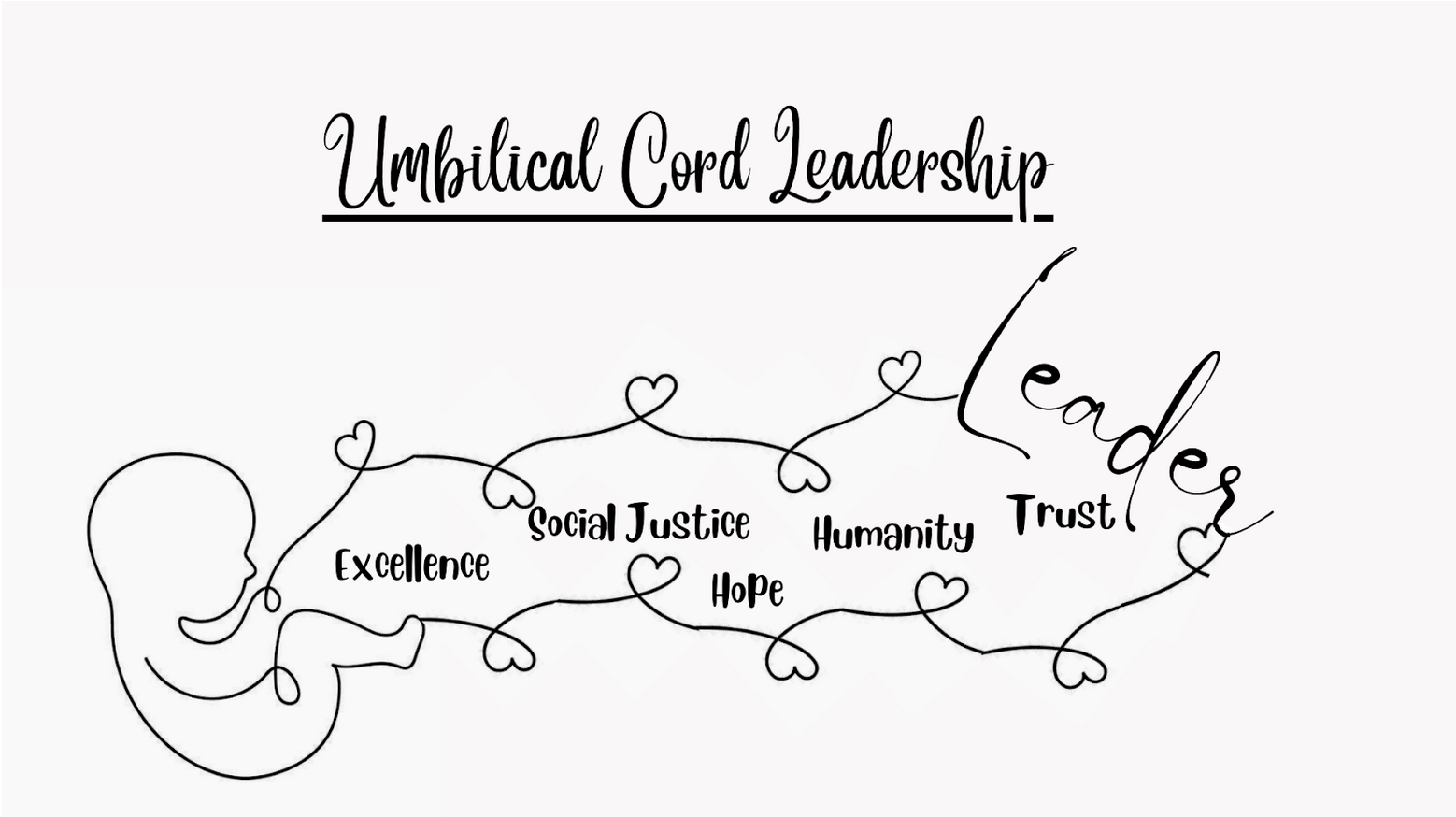In this section we share how we began to define values-based leadership and provide critical incidents that helped us examine, evaluate and explore what these values look like in our practice.
Most leaders develop in individualised ways – think of the “hero leader” who makes all of the decisions and drives change from above – instead we viewed our leadership approach from a particularly African perspective: as an umbilical cord, describing a process that connects, nurtures and helps us grow together. We intentionally choose to use this “imbeleko” metaphor, as it is used by the Xhosa people of South Africa. Derived from this is a gift-giving system where gifts are given freely and from the heart. It involves a reciprocal obligation to give if asked to do so and only to give what is needed. It imbues respect, restraint and a sense of responsibility (Aktipis and Aguiar, 2011). In the Xhosa culture the imbeleko extends beyond birth, which speaks to the elasticity of the relationships. It also refers to the blanket in which the mother carries her child on her back (Cakata, 2019), which in our context connects to the values of care and support. In Maasai culture the osotua is eternal and is passed on from generation to generation. The metaphor is therefore employed to anchor our efforts for connectedness, reciprocity, respect, responsibility and accountability.

Through this umbilical cord ELADIN provided the opportunity for sharing and reflecting on our own leadership through working, learning and growing together. Our leadership values were co-constructed and evolved over time. Our initial understanding was that all of our leadership styles were based on our own ideas and experiences within our individual roles and positions. We recognised that in practising values-based leadership as a Community of Practice, we needed to clarify and reflect on the core values that we could all hold dear during our process of collaboration. Hence, the metaphorical umbilical cord symbolises and emphasises the humanness of the relationships created in this CoP. The umbilical exploration will therefore be explored across three leadership levels namely the personal, relational, and collective.
Prior to developing our process for the construction of valued based leadership, we started by asking the following Critical Thinking Questions:
- What are the core values that inform decisions, practices and behaviours of good leaders? How do we move beyond checklists and definitions of “values” towards deep understanding and concrete practices that promote the values we hold?
- How do we ensure our values place the community at the centre of our leadership?
- How can leaders use reflection on critical incidents (both positive and negative experiences) to discuss how values shape our work?
The Process:
In our first workshop we all listed the values that we individually thought about in our own practice that could help inform our Community of Practice and journey. This discussion generated a list of 10 shared values which included: academic excellence, caring, diligence, commitment, support, fairness, humanity, hope, change and social justice. We then used a nominal group technique to further reflect on and discuss what we meant by these values and decided which were most central to our work. We created a final list of 5 shared values that became the basis of our values-based framework (VBF).



